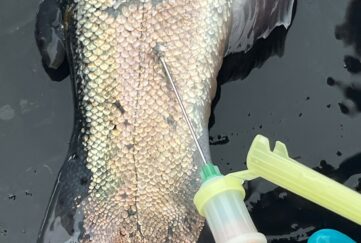Answers in the blood

Cutting edge blood biochemistry expertise is now being made available for fish farmers in Norway
The strides being taken by WellFish on its growth journey are increasing, both in length and frequency. September will mark the opening, in Bergen, of a new bespoke advanced blood biochemistry laboratory to service the needs of Norwegian fish farmers. This will be showcased at Aqua Nor later this month (stand A-118). WellFish is at the vanguard of applying this technology to aquaculture species in general and (currently) salmonids in particular, with widespread use of the technology in the Scottish and Irish industries.
By establishing a large and rapidly expanding database of biomarker endpoints, clinicians at WellFish can spot clinical chemistry profiles that indicate the status of a number of discrete organ systems such as gill, cardiac or liver function. Fish that are deemed negative by PCR for pathogens may still present with aberrant blood chemistry requiring additional investigation whilst, by the same token, fish that are indicated by PCR for a pathogen, may not necessarily be experiencing sickness.

Amund Litlabø and Karoline Hammersland working with samples at Norway’s Marine Research Institute
This is the very essence of biomarker assessment, which seeks to discern health rather than simply identify infection. Real-time benefits from knowing the status of a fish population’s blood chemistry are realised by the influence that this knowledge can have on stock management decisions. Examples include whether a handling operation is safe now or best delayed a little, or whether virally induced muscle damage is sufficiently recovered for harvesting to proceed safely.
WellFish has now completed its so called “A round” of investment and has received significant support from investors who understand that healthcare of cultivated animal protein species will, going forward, pivot on good data and lots of it!
Perhaps for the first time, the practice of assessing fish welfare can move further towards being quantitively rather than empirically informed, as is currently the case. Blood biochemistry provides a powerful lens through which an organism’s current health and welfare can be viewed and quantified. By furthering our understanding of what “normal” looks like for fish, WellFish is a long way down this road.


